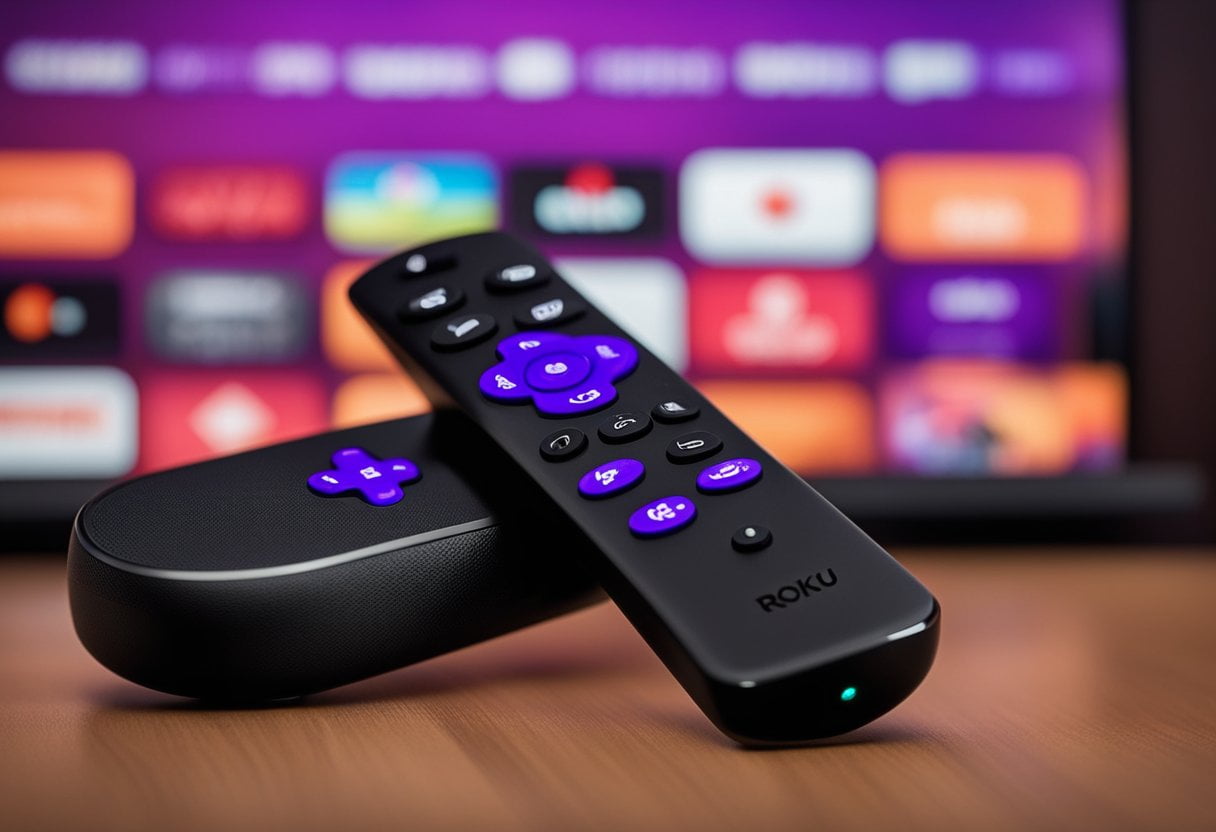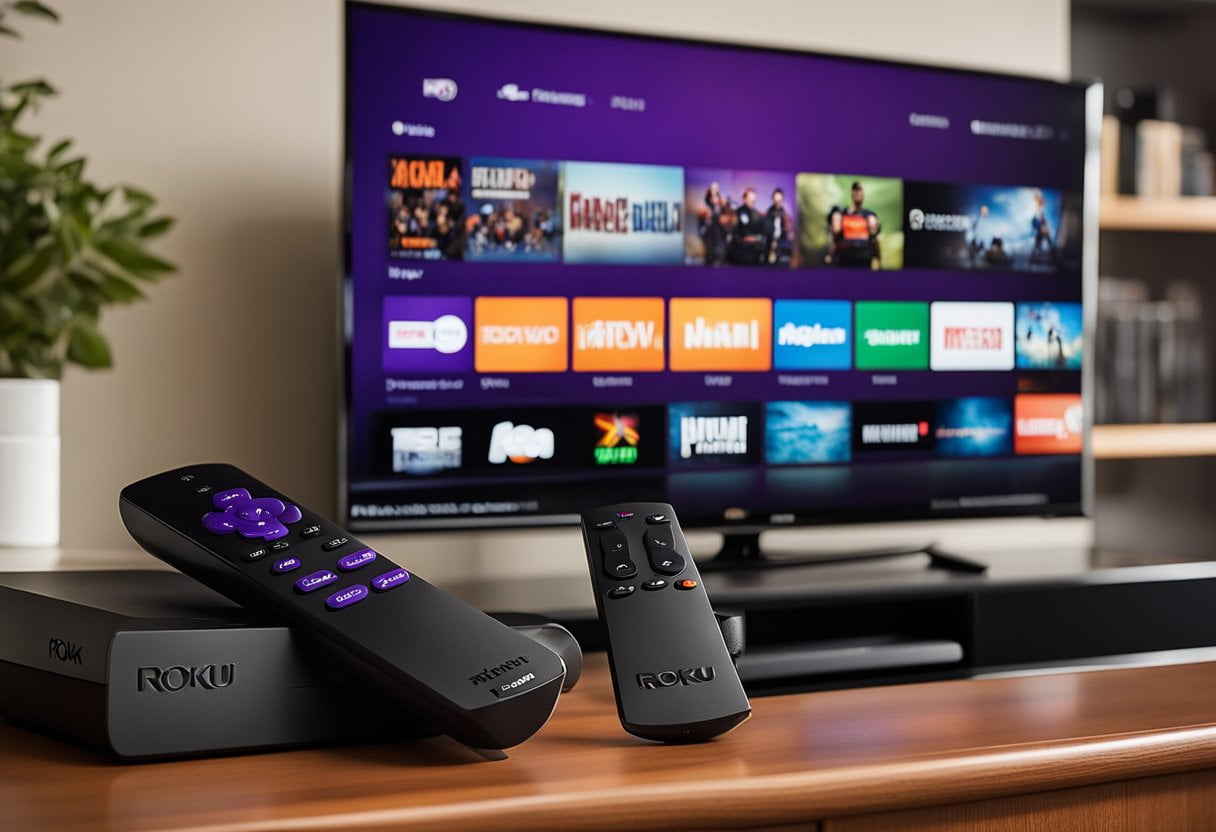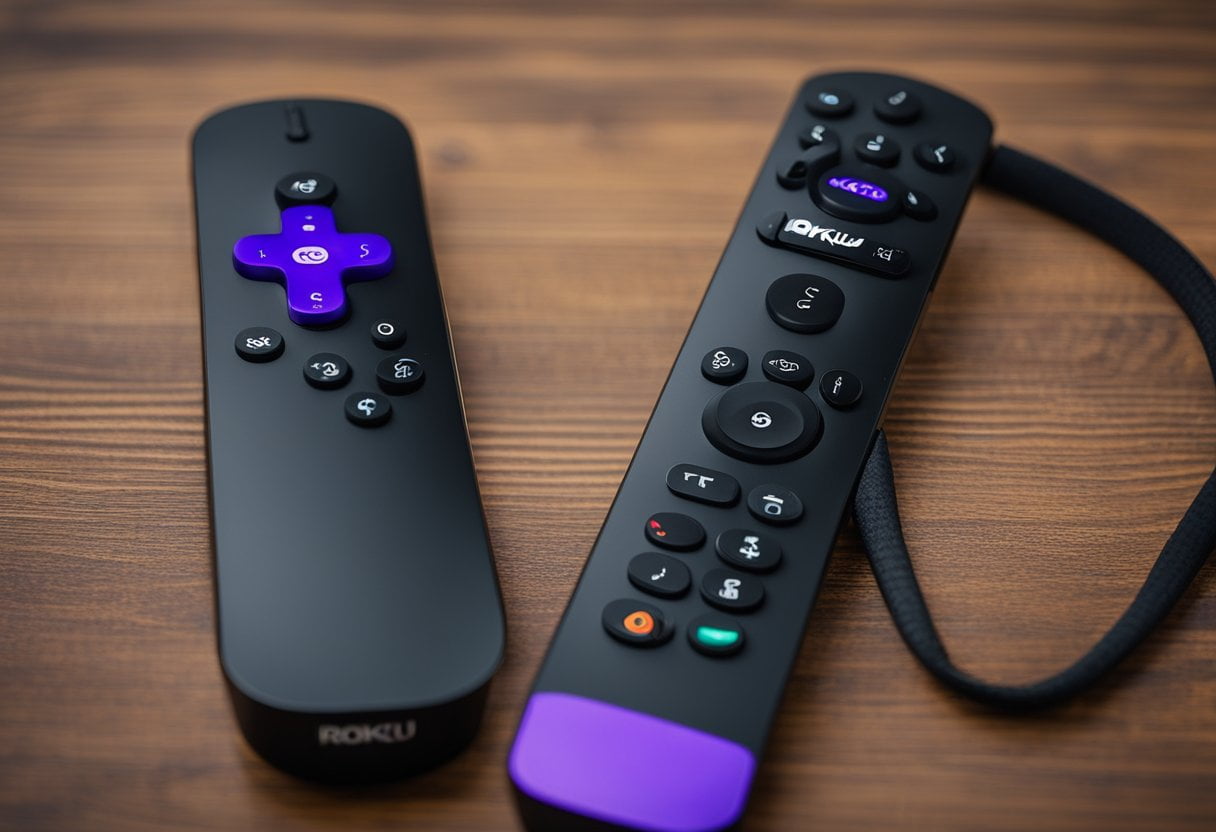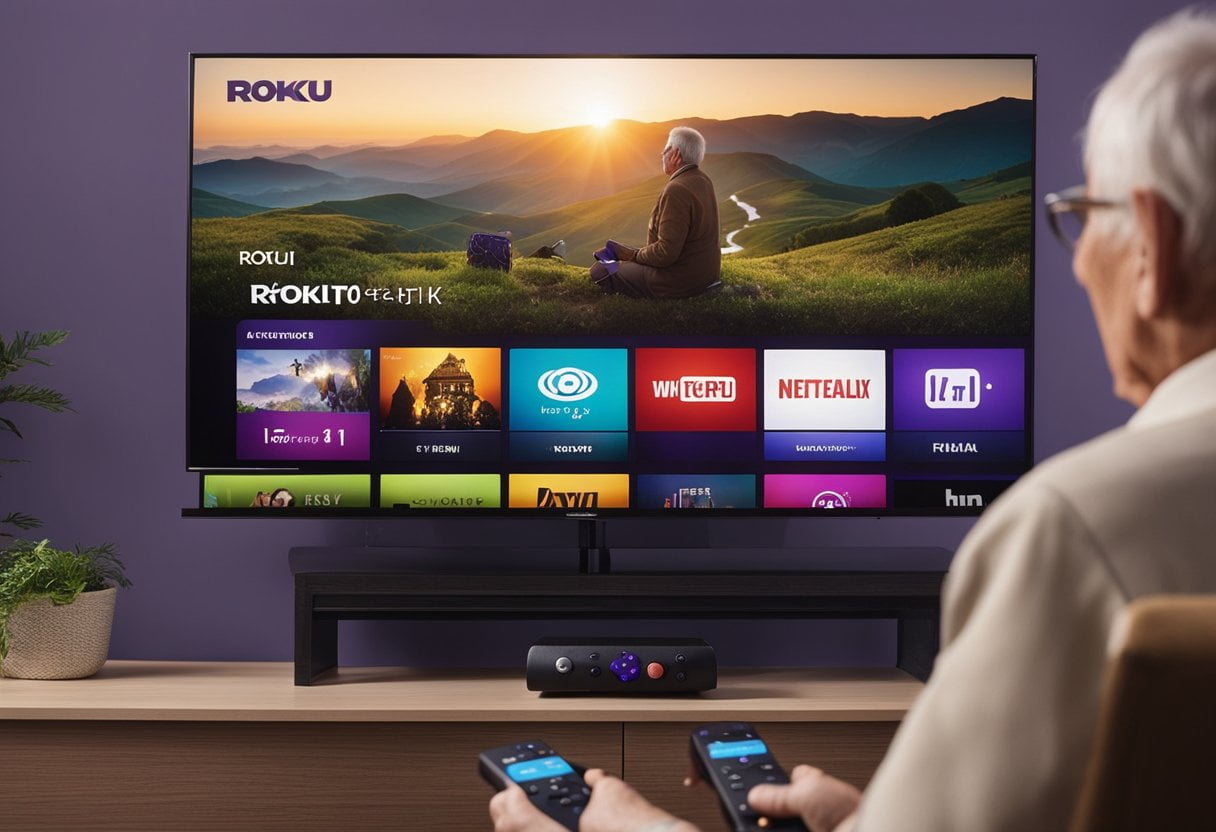Roku vs Firestick for Elderly: Ease of Use and Accessibility Comparison
February 7, 2024
When considering a streaming device for the elderly, Roku and Firestick offer distinct features and user experiences. This section will discuss their core functions, ease of use for seniors, device compatibility, price points, smart home integration, key features for the elderly, and how they fit into their respective ecosystems.
Core Functions and Offerings
Roku and Amazon Fire TV Stick (Firestick) serve primarily as streaming devices, offering access to a vast array of content and channels. Both support 4K and HDR streaming capabilities, ensuring high-quality viewing experiences. Roku’s streaming device lineup, including the Roku Streaming Stick 4K, offers various content options, while Fire TV Stick 4K and the more advanced Amazon Fire TV Stick 4K Max guide users through Amazon’s extensive Prime Video library.
Ease of Use for Seniors
Considering the usability and accessibility for seniors, Roku’s interface stands out for its simplicity and larger icons. The remote control has a familiar design, resembling traditional TV remotes. Firestick’s interface may appear more complex, potentially posing a challenge for those with impaired eyesight.
Device Compatibility
Both Roku and Firestick connect via an HDMI port, making them compatible with most modern televisions. The Roku Streambar additionally acts as a streaming box and soundbar, enhancing older TVs’ audiovisual capabilities without the need for a smart TV.
Price Comparison
Pricing for these devices varies but is structured to accommodate different budgets. Entry-level models may start as low as $29.99, with high-end models reaching up to around $99.99. The cost often reflects the device’s performance, with more expensive models typically providing additional features such as a remote finder or enhanced voice control.
Smart Home Integration
Smart home device integration is becoming increasingly important, and both Roku and Firestick offer features to connect with smart home devices. Firestick has built-in Alexa for controlling smart home devices like lights and thermostats. Roku supports Google Assistant, allowing a degree of voice control over the viewing experience and connected smart home elements.
Key Features for the Elderly
Accessibility features such as voice control can be particularly beneficial for the elderly. Roku and Firestick allow voice commands to search content, control playback, and adjust settings. Additionally, the remote finder feature on select Roku models and the option to connect headphones directly to the Roku remote for private listening enhance the usability for seniors.
Roku and Amazon Ecosystems
Each device benefits from integration within its respective ecosystem. Roku offers a neutral platform with access to most streaming services. Conversely, Firestick is designed to fit seamlessly within the Amazon Prime ecosystem, gaining from the synergy with Amazon Prime Video and other Amazon services. This may influence a user’s decision depending on their subscription preferences.
Content Availability and Quality

When considering the Roku and Fire Stick for the elderly, key aspects to evaluate include their accessibility to various streaming services, support for high-definition content, and the balance between free and subscription-based offerings, as well as the availability of local and network channels.
Streaming Service Access
Roku offers a wide array of streaming services, featuring prominent platforms such as Netflix, Hulu, Amazon Prime Video, HBO Max, Disney+, and many others. This extensive selection provides users with an abundant variety of content catering to different tastes and preferences. Similarly, the Fire Stick also supports these popular apps, ensuring that users have access to a comparable range of streaming services.
Support for 4K and HDR
Both the Roku Streaming Stick 4K and the Fire TV Stick 4K support 4K resolution, enabling viewers to enjoy crisp and vivid visuals, given they have compatible 4K televisions and content available. Additionally, these devices provide HDR support, which includes technologies like Dolby Vision and HDR10, delivering enhanced picture quality with better contrast and color accuracy.
- Dolby Vision: Available on select Roku and Fire Stick devices, providing a superior HDR experience.
- HDR10: Generally supported across 4K devices for improved picture quality.
Free and Subscription Services
Roku and Fire Stick both offer a combination of free and subscription-based channels, allowing users to tailor their viewing experience to their budget. Roku stands out with over 350 free channels, including Pluto TV and Tubi, while the Fire Stick offers access to services such as IMDb TV. Subscription services like Netflix, Hulu, and Amazon Prime Video form the backbone of premium content offerings on both platforms.
Local and Network Channel Access
For elderly viewers interested in local channels or looking to ‘cut the cord,’ both Roku and Fire Stick provide options. Streaming services like YouTube TV, Sling TV, and Peacock offer selections of local and network channels. These services often require a subscription, but they present a convenient alternative to traditional cable packages. Roku further simplifies access to local content with dedicated options for over-the-air content via Roku devices.
Device Specifications and Performance

When considering streaming devices for the elderly, factors like ease of use, connectivity, and audio-visual quality take precedence. Here, we discuss the specifics of Roku and Firestick devices to help determine which may be best suited for senior users.
Internet and Connectivity Features
Roku devices, such as the Roku Ultra, offer an ethernet port for a stable wired internet connection, which can be beneficial in areas with poor Wi-Fi coverage. Firestick models, including the Amazon Fire TV Stick 4K Max, support Wi-Fi 6, providing a faster wireless streaming experience given a compatible router.
Audio and Video Experience
Both Roku and Firestick support high-definition content. Roku Premiere and Roku Ultra allow for streaming in 4K with HDR10 for enhanced picture quality, while the Fire TV Stick 4K and Amazon Fire TV Stick 4K Max also bring Dolby Vision to the table, providing vivid images. On the audio side, devices from both brands support Dolby Atmos for immersive sound, assuming the presence of compatible audio equipment.
Comparison of Remotes and Navigation
Roku’s remotes are noted for their simplicity and easy navigation, with quick access to a selective number of channels. The Firestick’s remote control, however, integrates Alexa voice commands that may assist seniors who prefer voice search functionality or have mobility impairments that make traditional navigation difficult.
Variety of Device Options
Roku offers a range of devices such as the budget-friendly Roku Express to the feature-rich Roku Ultra, addressing various needs and price points. Firestick has fewer options, like the basic Fire TV Stick and the enhanced Fire TV Stick 4K Max, which is focused on higher performance.
Extended Functions for Entertainment
Beyond streaming, these devices also function as gaming platforms to a limited extent, with the Fire TV Cube offering the most power in Amazon’s lineup. Roku’s interface is generally cleaner and perhaps easier for the elderly to interact with, but both platforms offer a mobile app for additional control and features like private listening through Bluetooth headphones.
Benefits for Hearing Impaired
For individuals with hearing impairments, both Roku and Firestick offer features like closed captioning and compatibility with Bluetooth headphones. Roku’s remote with a headphone jack on some models provides the benefit of private listening, enabling seniors to watch TV without disturbing others.
User Experience and Customization

Selecting the optimal TV streaming device for ease of use and personalization is crucial, particularly for the elderly. The Roku and Fire Stick offer distinct experiences in terms of home screen layout, ads, and device integration, which can significantly influence user satisfaction.
Home Screen Layout and Customization
Roku presents a straightforward interface with large, easily navigable app icons. Its home screen prioritizes simplicity, allowing users to rearrange or remove channels to suit their preferences. Fire Stick’s home screen layout, in contrast, is more visually dense, which may be challenging for those with visual impairments or cognitive difficulties.
Ad Experience on Platforms
Fire Stick’s platform has been noted to contain a somewhat more intrusive ad experience. Ads are integrated within the interface, which can be distracting. Roku, while it also features ads, typically does so in a less prominent manner, allowing for a cleaner interface that users may find less overwhelming.
Smartphone and Tablet App Integration
Both streaming devices support mobile app integration. Roku’s mobile app provides additional functionalities like private listening, while Fire Stick’s app enables voice search through Alexa. This integration facilitates more personalized and accessible control from smartphones and tablets, particularly convenient for users who may struggle with traditional remotes.
Voice Search and Control
Fire Stick has robust voice search capabilities via Alexa. Users can easily search for content, control playback, and even manage smart home devices. Roku’s voice control, compatible with both Google Assistant and Apple’s Siri, offers a similar search function, albeit with potentially less comprehensive smart home device integration than Alexa. Both platforms strive to simplify navigation and selection processes through their respective voice search functionalities.





